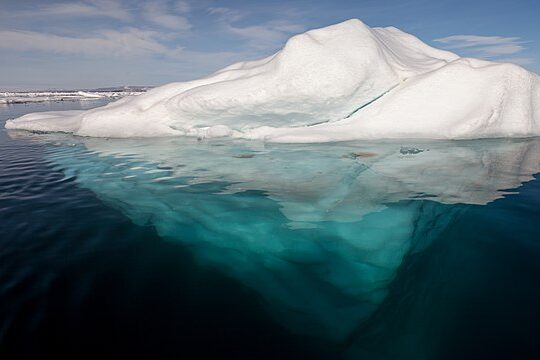
In the frigid expanse off Canada’s northern coast, parka-clad scientists witness an unconventional spectacle: seawater being pumped onto the frozen ocean surface.
Their mission? To combat global warming.
As sea ice dwindles, the dark expanse of open water absorbs more solar energy, hastening the pace of climate change. Thus, these researchers seek to bolster the ice to prevent its rapid disappearance.
Welcome to the realm of geoengineering—a frontier where humans deliberately intervene in the Earth’s climate system to mitigate the damage wrought upon it.
While established efforts like afforestation and carbon capture aim to sequester planet-warming gases, more experimental measures venture further, endeavouring to alter the Earth’s energy balance.
Despite vigorous opposition from many scientists, who caution against such endeavours as potential distractions from carbon emissions reduction and sources of unforeseen harm, a small cadre of proponents asserts that these approaches could offer interim solutions as humanity transitions to more sustainable practices.
At the forefront of this endeavour is Dr. Shaun Fitzgerald and his team from the University of Cambridge’s Centre for Climate Repair. Their Arctic experiment seeks to thicken sea ice sufficiently to reverse or at least slow its alarming retreat.
Will it work or is it, as one scientist put it, “quite insane”?
“We don’t actually know enough to determine whether this is a good idea or bad idea,” admits Dr Fitzgerald.
The project unfolds amidst the harsh environs of Cambridge Bay, a remote Canadian outpost within the Arctic Circle. Here, researchers drill into the winter-formed sea ice, pumping approximately 1,000 litres of seawater per minute across its surface.
“It’s quite cold,” Andrea Ceccolini of Real Ice, a British company leading the trip, tells me via a patchy Zoom connection from inside a flapping white tent.
“It’s about -30C with a strong wind, which brings the temperature to -45C with wind chill factor.”
Exposed to the biting Arctic air, the seawater swiftly freezes, augmenting ice thickness. Additionally, it compresses the snow layer, facilitating the formation of ice beneath—a process monitored by local residents in the ensuing months.
Yet, while initial results show promising signs of ice thickening within their study area, the feasibility and broader implications of their approach remain uncertain.
“The idea is that the thicker the ice [at the end of winter], the longer it will survive when we go into the melt season,” Mr Ceccolini explains.
Concerns abound, including the potential for saltier ice to hasten summer melting and the monumental challenge of scaling the project to meaningful levels.
“The vast majority of polar scientists think this is never going to work out,” cautions Martin Siegert, an experienced glaciologist at the University of Exeter, who is not involved in the project.
Estimates suggest that realising significant ice thickening across even a fraction of the Arctic could necessitate millions of wind-powered pumps—an undertaking of unprecedented logistical magnitude.
“It is quite insane in my opinion that this could be done at scale for the entire Arctic Ocean,” says Julienne Stroeve, a professor of polar observation and modelling at University College London.
Beyond such endeavours lie even more audacious proposals, from enhancing cloud reflectivity to simulating volcanic eruptions. Yet, these schemes have elicited grave warnings from experts, who fear their potential to disrupt global weather patterns and ecosystems.
“Geoengineering technologies come with enormous uncertainties and create novel risks for ecosystems and people,” explains Lili Fuhr, director of the Fossil Economy Program at the Center for International Environmental Law.
“The Arctic is essential to sustaining our planetary systems: pumping sea water onto sea-ice on a large scale could change ocean chemistry and threatens the fragile web of life.”
And there’s a more fundamental, widespread concern with these types of projects.
“The real danger is it provides a distraction, and people with vested interests will use it as an excuse to keep burning fossil fuels,” Prof Siegert warns.
“Frankly, it’s insane and needs to be stopped. The way to solve this crisis is to decarbonise: it’s our best and only way forward.”
Acknowledging these risks, the Arctic researchers emphasise their cautious approach, stressing the need for comprehensive risk assessment before wider implementation.
“We’re not here promoting this as the solution to climate change in the Arctic,” Dr Fitzgerald stresses.
“We’re saying that it could be [part of it], but we’ve got to go and find out a lot more before society can then decide whether it’s a sensible thing or not.”
They concede that geoengineering is no panacea, advocating instead for urgent emissions reduction as the cornerstone of climate action.
Nevertheless, the sobering reality remains: even with ambitious mitigation efforts, the Arctic faces an uncertain future, with projections indicating the imminent loss of summer sea ice—an emblematic shift with profound implications for the planet’s climate and ecosystems.
“We need other solutions,” argues PhD student Jacob Pantling, a researcher at the Centre for Climate Repair who braved the icy winds in Cambridge Bay.
“We have to reduce emissions, but even if we do them as quickly as possible, the Arctic is still going to melt.”
——————————————————————————
At Natural World Fund, we are passionate about stopping the decline in our wildlife.
The decline in our wildlife is shocking and frightening. Without much more support, many of the animals we know and love will continue in their decline towards extinction.
When you help to restore a patch of degraded land through rewilding to forests, meadows, or wetlands, you have a massive impact on the biodiversity at a local level. You give animals a home and food that they otherwise would not have had, and it has a positive snowball effect on the food chain.
We are convinced that this is much better for the UK than growing lots of fast-growing coniferous trees, solely to remove carbon, that don’t actually help our animals to thrive.
This is why we stand for restoring nature in the UK through responsible rewilding. For us, it is the right thing to do. Let’s do what’s right for nature!
Donate today at https://naturalworldfund.com/ and join in the solution!

